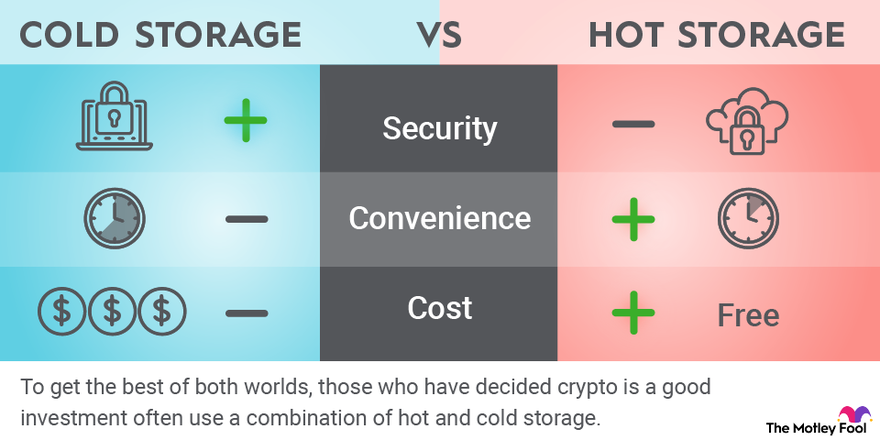Since cryptocurrencies are decentralized, most of the responsibility for their security falls on their owner. If your crypto is lost or stolen, you cannot call anyone to get it back. Many security-conscious crypto enthusiasts have turned to cold storage to protect their coins.
This type of storage is not only used by individual investors. It is also a favorite of some of the companies behind the best cryptocurrency exchanges and top cryptocurrency stocks. To find out why, let's look at how cold storage works and what makes it so safe.

Image Source: The Motley Fool
What is a cold room?
Cold storage is an offline cryptocurrency storage facility. Any crypto wallet that is not connected to the internet is considered cold storage and is considered a cold wallet. The most common type of cold wallet is a hardware wallet, which is usually a small device that connects to a computer.
Because cold storage is offline, it provides excellent security for Bitcoin ( BTC -0.38% ) and other cryptocurrencies. Hackers will not be able to access your cryptocurrency without an internet connection.
How does it work in the fridge?
Cryptocurrency storage is the protection of your cryptocurrency keys. In cold storage, your keys are stored offline except during transaction processing.
There are two types of keys (cryptographic data strings) for cryptocurrencies: public keys and private keys. A public key identifies a particular crypto wallet during a transaction. A private key is a code that allows its owner to access the cryptocurrency present in the wallet.
To understand how cold storage works, let's say you have a hardware wallet. To use it, you must first connect it to your computer. Then you choose to buy the crypto that will generate the address. You can send your cryptocurrency to this address and store it in your cold wallet. The device contains your public and private keys, so when you disconnect it from your computer, this information is completely erased.
It is a similar process if you want to transfer cryptocurrency from your cold wallet to another address. Connect the cold wallet to your computer, enter the address and send cryptocurrency.
Cold Wallet and Digital (Hot) Wallet.
Another type of crypto storage is a digital wallet, also known as a web-connected hot wallet. Comparing cold and hot wallets in some important areas:
- Security: Cold wallets are more secure. Although hot wallets can provide a high level of security, being online means they are vulnerable to being hacked
- Comfort: Warm compresses are more comfortable. They allow you to send and receive cryptocurrency quickly, while cold wallets sacrifice speed for security.
- Cost: Most hot wallets are free. Hardware covers are the most common form of cold storage and typically cost between $50 and $150. However, since you can store your cryptocurrency keys on paper, there are ways to create free cold wallets.
To get the best of both worlds, those who decide that cryptocurrency is a good investment often use a combination of hot and cold storage. They keep most of their cryptocurrency cold, but use a hot wallet for small amounts and daily transactions.
Considering the importance of protecting your cryptocurrency, a smart option is to consider cold storage. A hardware wallet is a relatively inexpensive one-time purchase, especially if you plan to invest heavily in cryptocurrency.

